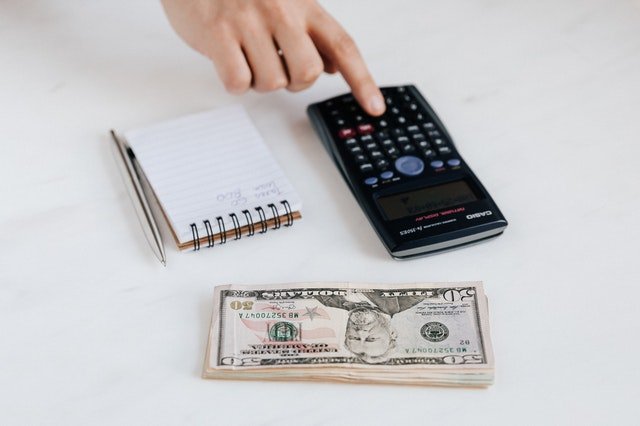Quel rendement locatif viser ? Si vous souhaitez entrer dans le club des 3 millions de Français qui investissent dans la pierre en achetant votre premier bien, cette question se pose pour vous ! Mesurée par un taux, la rentabilité d’un investissement à atteindre dépend de certains paramètres dont nous tâcherons, dans cet article, de vous donner les clés.
 Avant même de penser rendement locatif, il est utile de revenir sur le marqueur qui sert à en évaluer la performance de votre placement, soit le taux de rentabilité. C’est lui qui permet à l’investisseur de ne pas partir à l’aventure, mais de tabler sur un investissement immobilier vraiment rentable, à chaque fois qu’il met son argent en jeu. Plusieurs niveaux de précision caractérisent ce taux : chacun a son utilité dans le processus de choix d’un bien.
Avant même de penser rendement locatif, il est utile de revenir sur le marqueur qui sert à en évaluer la performance de votre placement, soit le taux de rentabilité. C’est lui qui permet à l’investisseur de ne pas partir à l’aventure, mais de tabler sur un investissement immobilier vraiment rentable, à chaque fois qu’il met son argent en jeu. Plusieurs niveaux de précision caractérisent ce taux : chacun a son utilité dans le processus de choix d’un bien.
 Pour avoir une idée vraiment précise du taux de rentabilité d’un bien, la fiscalité est un élément majeur à comprendre dans les calculs. Selon le montage fiscal et le dispositif choisi, les chiffres peuvent considérablement varier. La rentabilité nette-nette consiste à intégrer l’impact des impôts dans le calcul, en déduisant les charges d’impôts et de prélèvements sociaux des recettes locatives. C’est en général cette dernière que l’on eut utiliser pour comparer à d’autres placements comme le livret A.
Pour avoir une idée vraiment précise du taux de rentabilité d’un bien, la fiscalité est un élément majeur à comprendre dans les calculs. Selon le montage fiscal et le dispositif choisi, les chiffres peuvent considérablement varier. La rentabilité nette-nette consiste à intégrer l’impact des impôts dans le calcul, en déduisant les charges d’impôts et de prélèvements sociaux des recettes locatives. C’est en général cette dernière que l’on eut utiliser pour comparer à d’autres placements comme le livret A.
 Quand le calcul de la rentabilité locative de son investissement devient plus clair pour l’investisseur, la question de quel rendement locatif viser demeure. Deux clés vont permettre d’y répondre, autour de l’autofinancement du bien d’abord, puis des objectifs de l’investisseur ensuite.
Quand le calcul de la rentabilité locative de son investissement devient plus clair pour l’investisseur, la question de quel rendement locatif viser demeure. Deux clés vont permettre d’y répondre, autour de l’autofinancement du bien d’abord, puis des objectifs de l’investisseur ensuite.
 Une fois que l’on a une idée plus précise du ou des cashflows que l’on souhaite obtenir, il convient aussi de repérer les moyens à mettre en œuvre pour les atteindre. Cela se joue beaucoup avec le choix du bien, mais aussi en évitant quelques pièges.
Une fois que l’on a une idée plus précise du ou des cashflows que l’on souhaite obtenir, il convient aussi de repérer les moyens à mettre en œuvre pour les atteindre. Cela se joue beaucoup avec le choix du bien, mais aussi en évitant quelques pièges.
 Générer de forts taux de rendement correspond souvent à un type de location spécifique, particulièrement rémunérateur, que l’on qualifie à “haut rendement”. La colocation et la location saisonnière en sont les plus connues, avec des taux atteignant sans problème les 2 chiffres.
Attention cependant à la location saisonnière autour de laquelle les pouvoirs publics ont resserré leur étau par des règlementations de plus en plus contraignantes, et dont la gestion locative est lourde et chronophage.
Générer de forts taux de rendement correspond souvent à un type de location spécifique, particulièrement rémunérateur, que l’on qualifie à “haut rendement”. La colocation et la location saisonnière en sont les plus connues, avec des taux atteignant sans problème les 2 chiffres.
Attention cependant à la location saisonnière autour de laquelle les pouvoirs publics ont resserré leur étau par des règlementations de plus en plus contraignantes, et dont la gestion locative est lourde et chronophage.
Calculer sa rentabilité locative : la base
 Avant même de penser rendement locatif, il est utile de revenir sur le marqueur qui sert à en évaluer la performance de votre placement, soit le taux de rentabilité. C’est lui qui permet à l’investisseur de ne pas partir à l’aventure, mais de tabler sur un investissement immobilier vraiment rentable, à chaque fois qu’il met son argent en jeu. Plusieurs niveaux de précision caractérisent ce taux : chacun a son utilité dans le processus de choix d’un bien.
Avant même de penser rendement locatif, il est utile de revenir sur le marqueur qui sert à en évaluer la performance de votre placement, soit le taux de rentabilité. C’est lui qui permet à l’investisseur de ne pas partir à l’aventure, mais de tabler sur un investissement immobilier vraiment rentable, à chaque fois qu’il met son argent en jeu. Plusieurs niveaux de précision caractérisent ce taux : chacun a son utilité dans le processus de choix d’un bien.
La rentabilité brute d’un investissement immobilier
Nul besoin d’un simulateur pour la calculer. Elle porte sur un rapport simple entre le coût d’achat d’un bien immobilier et les recettes projetées de ce bien, en d’autres termes, le loyer. On calcule ce taux sur un an, en divisant le prix d’achat du bien par l’ensemble du revenu d’un investissement locatif, le tout multiplié par 100. On obtient ainsi un premier taux indicatif : le rendement brut. Cependant, la rentabilité brute (ou rendement locatif brut), n’est, en effet, pas significative pour une décision d’achat. Elle ne sert que de première approche pour mesurer l’intérêt de ce bien ou pour comparer plusieurs possibilités entre elles. Souvent affichée comme une fin en soi et non comme un simple guide, ce ratio n’est pas complet pour une prise de décision sur un projet car il manque le calcul du rendement net, le taux de rentabilité interne et la valeur actuelle nette.La formule du rendement locatif brut
Rendement locatif = Loyer annuel / coût total de l’opération *100Quelle rentabilité brute ?
La rentabilité brute moyenne à Paris est située entre 3 et 4 %, la fourchette haute concernant les biens de petite taille comme les studios. En province, cette rentabilité monte entre 4 et 7 %. Néanmoins, dans l’optique de viser un bon rendement locatif, il est préférable de s’intéresser à des taux plus hauts.La rentabilité nette
On entend par rentabilité nette, la rentabilité nette de charges. C’est-à-dire que l’on comprend dans le calcul le montant des charges incombant au propriétaire qui réalise un investissement locatif. Ce montant va comprendre les frais de notaire, qui peuvent atteindre jusqu’à 7 % du prix du bien dans l’ancien, ainsi que d’autres charges comme les charges de copropriété, la taxe foncière, les frais d’assurances, les taux d’intérêt au niveau de l’emprunt, et le coût des éventuels travaux de restauration. Le total de ces charges sera ajouté au prix du bien dans le calcul du taux, ce qui aura pour effet de le réduire, mais d’aboutir aussi à une estimation plus réaliste.La rentabilité nette-nette
 Pour avoir une idée vraiment précise du taux de rentabilité d’un bien, la fiscalité est un élément majeur à comprendre dans les calculs. Selon le montage fiscal et le dispositif choisi, les chiffres peuvent considérablement varier. La rentabilité nette-nette consiste à intégrer l’impact des impôts dans le calcul, en déduisant les charges d’impôts et de prélèvements sociaux des recettes locatives. C’est en général cette dernière que l’on eut utiliser pour comparer à d’autres placements comme le livret A.
Pour avoir une idée vraiment précise du taux de rentabilité d’un bien, la fiscalité est un élément majeur à comprendre dans les calculs. Selon le montage fiscal et le dispositif choisi, les chiffres peuvent considérablement varier. La rentabilité nette-nette consiste à intégrer l’impact des impôts dans le calcul, en déduisant les charges d’impôts et de prélèvements sociaux des recettes locatives. C’est en général cette dernière que l’on eut utiliser pour comparer à d’autres placements comme le livret A.
Le calcul des cash-flows
Il concerne un autre indicateur en ligne de mire de tous les investisseurs. Basé sur les flux de trésorerie, il consiste à prendre en compte chaque mois, le montant final restant à l’investisseur, une fois toutes les charges acquittées et le loyer empoché. Cumulés sur un an, le calcul des cashflows donne lieu au calcul du TRI, ou taux de rendement interne, qui va mesurer la performance de l’effet levier du crédit immobilier.Quel est l’investissement locatif le plus rentable ?
L’investissement locatif le plus rentable est celui qui répond le mieux aux besoins d’un investisseur. En tenant compte de ses objectifs, de son budget, mais aussi de sa capacité à prendre des risques et de ses préférences en matière de gestion, il sera possible d’identifier précisément le bien le plus intéressant, tant d’un point de vue financier que d’un point de vue de son utilisation. Mais de manière générale, on considère que les colocations et les immeubles de rapport sont les investissements les plus rentables.Le rendement locatif varie selon les villes.
Il est donc conseillé de comparer les rendements locatifs moyens des différentes villes afin de déterminer celles qui sont les plus rentables et définir où investir. Le rendement peut aller du simple au triple selon la ville ! Le plus important reste cependant de s’assurer que le bien choisi répond aux attentes et aux objectifs de l’investisseur.Alors quel rendement locatif viser ?
 Quand le calcul de la rentabilité locative de son investissement devient plus clair pour l’investisseur, la question de quel rendement locatif viser demeure. Deux clés vont permettre d’y répondre, autour de l’autofinancement du bien d’abord, puis des objectifs de l’investisseur ensuite.
Quand le calcul de la rentabilité locative de son investissement devient plus clair pour l’investisseur, la question de quel rendement locatif viser demeure. Deux clés vont permettre d’y répondre, autour de l’autofinancement du bien d’abord, puis des objectifs de l’investisseur ensuite.
Assurer l’autofinancement du bien
La base d’un investissement réussi, quel que soit le taux de rendement que l’on en attend, est avant tout de ne pas faire perdre d’argent. Un investissement locatif peut, en effet, devenir un boulet dans le patrimoine d’un investisseur, si les traites de l’emprunt grèvent son budget avec une plus-value à la revente incertaine. Pour cette raison, le rendement que l’on doit viser à minima est celui qui assure l’autofinancement du bien.La règle des 70 %
Il n’est pas difficile de s’assurer de l’autofinancement d’un bien en se basant sur les cash-flows qu’il va générer chaque mois. Globalement, les flux de trésorerie sortants, qui résident dans les charges, doivent être entièrement absorbés par les recettes locatives, tout en laissant un excédant. Ce qui signifie que les coûts afférent au remboursement du prêt, à ses intérêts, ainsi que les charges, n’excèdent jamais le total des recettes locatives pour le bien. Pour s’en assurer, on conseille la règle des 70 %, soit que le montant des mensualités du prêt ne dépasse pas 70 % des recettes locatives, de manière à ce que les 30 % restants puissent couvrir les dépenses de fonctionnement du bien : travaux de copropriété, frais d’entretien, etc. Cette règle n’est pas toujours facile à appliquer, mais elle a le gros avantage de permettre de distinguer rapidement si acquérir un bien immobilier en vaut la peine, ou si quelques ajustements sont nécessaires. Un bien qui dégage un cash flow insuffisant peut, en effet, dégager un meilleur rendement locatif si l’on joue sur 2 variables, en :- réduisant le montant des mensualités de prêt : comme, par exemple, en négociant mieux ses mensualités d’emprunt, en rallongeant la durée du prêt ou en augmentant son apport personnel ;
- ou en accroissant les recettes locatives grâce à une stratégie “haut rendement”, comme la location saisonnière, la colocation ou la location meublée sous le régime LMNP.
Limites de la rentabilité
La rentabilité est un peu la boussole des investisseurs, mais cela ne doit pas faire oublier qu’elle n’est pas le seul critère qui doit présider à l’achat d’un nouveau bien immobilier. La revente et l’objectif de la plus-value ne doivent jamais être occultés. Car l’argent que l’on gagne grâce à un très bon rendement locatif durant la durée de détention d’un bien, peut très bien être perdu avec une moins-value lors d’une revente. N’oubliez pas aussi, à ce propos, que les revenus locatifs sont plus lourdement imposés qu’une plus-value immobilière. Il est vivement conseillé, donc, de toujours considérer un investissement locatif dans sa globalité. Cela se conçoit en portant son choix sur des biens sujets à une revalorisation constante, situés dans des quartiers “porteurs”. Mieux vaut donc éviter les logements à bas coût, qui demanderont des concessions sur le prix en cas de revente. Ensuite, il ne faut pas oublier que le rendement est en immobilier fonction du risque, et qu’à de forts rendements vont correspondre de forts risques locatifs. Il existe à cet égard, deux grandes typologies d’investisseurs : ceux d’abord qui vont privilégier le rendement locatif pour construire rapidement un parc locatif rentable, jouant à fond sur l’effet de levier du crédit. Et il existe les autres, amateurs d’investissements à visée patrimoniale sur du long terme (minimum 20 ans), qui privilégient avant tout la valeur de leurs biens.Comment atteindre le rendement locatif souhaité ?
 Une fois que l’on a une idée plus précise du ou des cashflows que l’on souhaite obtenir, il convient aussi de repérer les moyens à mettre en œuvre pour les atteindre. Cela se joue beaucoup avec le choix du bien, mais aussi en évitant quelques pièges.
Une fois que l’on a une idée plus précise du ou des cashflows que l’on souhaite obtenir, il convient aussi de repérer les moyens à mettre en œuvre pour les atteindre. Cela se joue beaucoup avec le choix du bien, mais aussi en évitant quelques pièges.
Les bases d’un bon rendement locatif
L’emplacement
On le répète souvent, mais l’emplacement d’un bien détermine, pour une bonne partie, le futur rendement locatif d’un bien. On préfère, bien sûr, toujours des biens situés en centre-ville proches de toutes les commodités, pour lesquels il y aura toujours des locataires. On aura le soin de choisir l’emplacement en fonction aussi de la typologie du bien : soit situé près des universités pour un logement étudiant, ou près d’un pôle d’activité s’il s’adresse à de jeunes actifs.La gestion
S’occuper soi-même de la gestion locative, soit trouver les locataires, établir les baux et les quittances et s’occuper des contentieux, prend du temps. Mais cela fait aussi économiser sur les coûts de fonctionnement et optimise les ratios. Il en est de même pour les travaux : être capable d’en faire soi-même une partie permet d’économiser sur la somme empruntée, donc de faire baisser ses mensualités de prêt et d’accroître son rendement locatif.La fiscalité
Tout revenu issu d’un investissement immobilier est taxé, mais la fiscalité immobilière offre de multiples possibilités d’alléger ce poste par un montage bien étudié. Dispositif Pinel en achetant dans le neuf, déficit foncier pour acheter un bien à rénover, ou LMNP pour louer en meublé en défiscalisant, il y en a un peu pour tous les goûts. Une grande diversité de régime qui démontre que l’on ne peut s’intéresser à l’immobilier en faisant l’impasse sur le sujet. Sachant que le choix du mauvais régime fiscal peut faire basculer un investissement dans le rouge, ne sous estimez jamais ce chapitre dans vos calculs de rendement.La stratégie locative
 Générer de forts taux de rendement correspond souvent à un type de location spécifique, particulièrement rémunérateur, que l’on qualifie à “haut rendement”. La colocation et la location saisonnière en sont les plus connues, avec des taux atteignant sans problème les 2 chiffres.
Attention cependant à la location saisonnière autour de laquelle les pouvoirs publics ont resserré leur étau par des règlementations de plus en plus contraignantes, et dont la gestion locative est lourde et chronophage.
Générer de forts taux de rendement correspond souvent à un type de location spécifique, particulièrement rémunérateur, que l’on qualifie à “haut rendement”. La colocation et la location saisonnière en sont les plus connues, avec des taux atteignant sans problème les 2 chiffres.
Attention cependant à la location saisonnière autour de laquelle les pouvoirs publics ont resserré leur étau par des règlementations de plus en plus contraignantes, et dont la gestion locative est lourde et chronophage.



